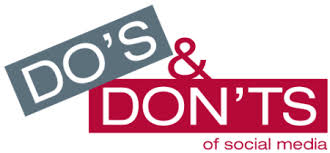
by Michael Gaio
A professor of mine in journalism school at Missouri once said (actually, he tweeted): “Social media is like a gun. Smart people will use it as a useful tool, not-so-smart people will shoot themselves in the foot with it.”
Unfortunately, if you’re a high school or college administrator tasked with overseeing your student-athletes on social media, you’ve probably dealt with a few too many virtual foot injuries over the years.
Many schools are now going on the offensive. Social media seminars for student-athletes are becoming commonplace in high schools and colleges across the country. Last night, I attended such a meeting at Oregon High School near AB’s headquarters in Madison, Wis. Whether they serve as a refresher course or even as a guideline for those considering implementing such a program at their school for the first time, here are a few notes from the meeting.
The speaker was David Petroff, director of athletic communications at nearby Edgewood College. In his role with Edgewood, Petroff is charged with educating student-athletes on best practices for social media.
“I don’t want to scare them, but rather have them see the positives and the power of social media,” he says about his student-athletes. But Petroff noticed that by the time kids reached college, too many bad habits had already formed. Now he speaks to local high schools to try to give kids a head start.
Four Things to Keep in Mind:
1. It’s a tool, not a toy.
Social media isn’t just something for your own entertainment, Petroff says. If used effectively, social media can be an asset to help a student-athlete’s individual brand, their community, their team and the school they represent.
2. Nothing is truly private… ever.
Petroff says there are two types of social media users: Those who realize they are functioning in public and those who don’t. While many kids think they can delete a tweet or delete their Facebook profile if need be, many don’t realize that content posted on the internet can last forever. Content can be captured in screenshots or saved by other users. And that message someone thinks only his or her friends will see? Student-athletes should keep in mind that tweets, Facebook statuses, or Instagram photos could end up being viewed by thousands of people.
3. If you retweet it (or share it), you own it.
Yes, this even applies to people who put that cliche saying, “RTs do not equal endorsements,” on their Twitter profile. That phrase is basically worthless. As Petroff says, “Freedom of speech does not equal freedom from consequences.” This is something with which younger student-athletes struggle. They retweet a trash-talking tweet from a friend and all-of-a-sudden they can be caught in the middle of an ugly conversation over the internet.
Petroff shared the example of Ryan Spadola, now a wide receiver for the Miami Dolphins. In 2011, Spadola was a top wide receiver at the FCS level of college football for Lehigh University. Before an NCAA quarterfinal game, he retweeted “an inappropriate and repugnant racial reference.”
Even though the tweet wasn’t Spadola’s, he was still suspended for retweeting the message.
4. Personal branding: Every tweet reflects who you are.
How are student-athletes choosing to represent themselves? Are they sending the right message about themselves to the public? Petroff reminded the Oregon high schoolers that coaches, college admissions officers and employers all use social media to learn more about candidates. What does your social media portfolio say about you?
When it comes to social media, there are plenty of examples of what not to do. But Petroff says it’s important to provide positive examples of how student-athletes should be using social media.
What Should You Post?
To continue reading this article from Athletic Business, click HERE






